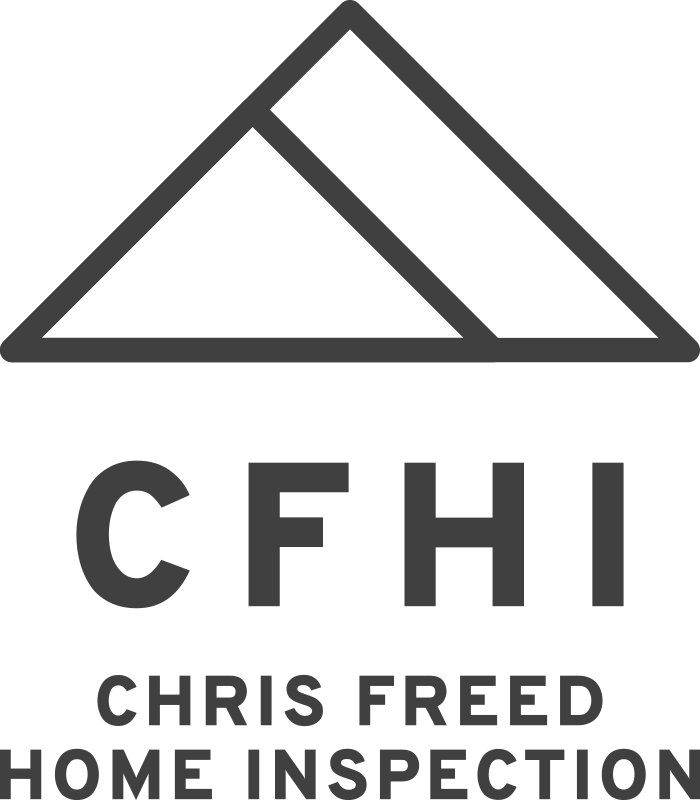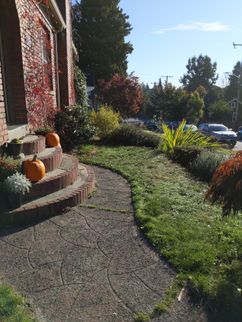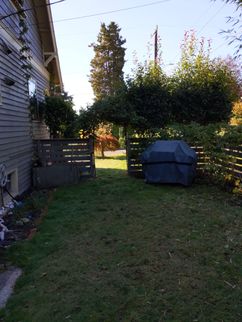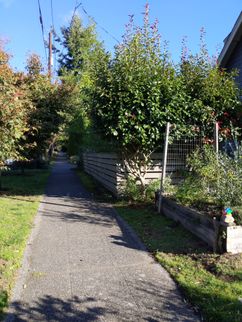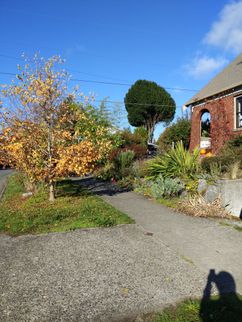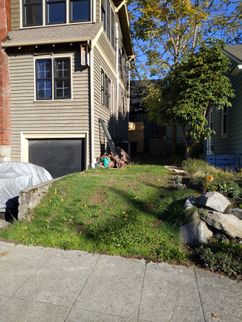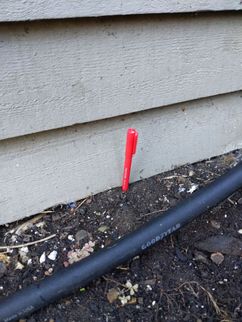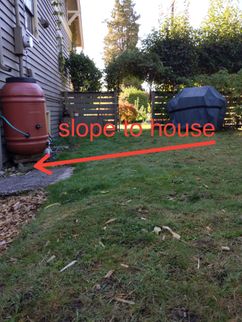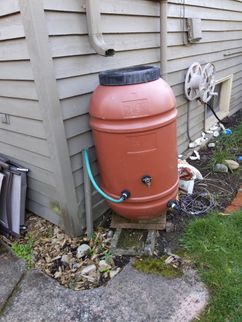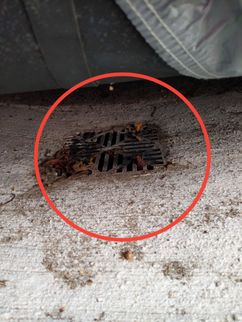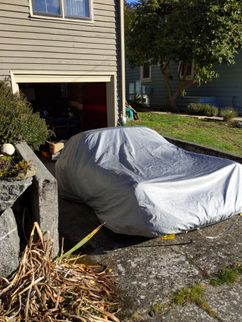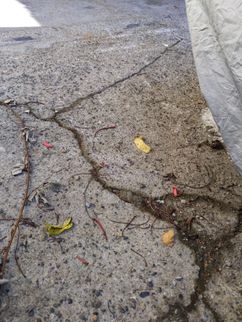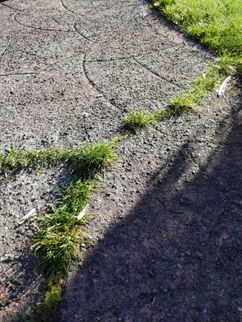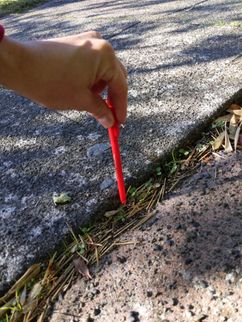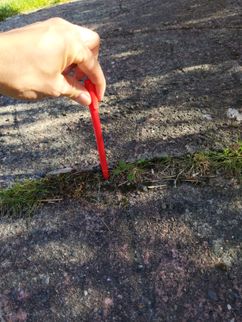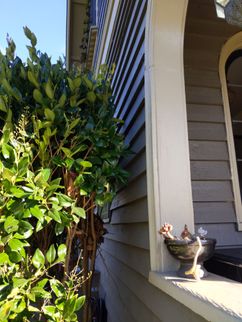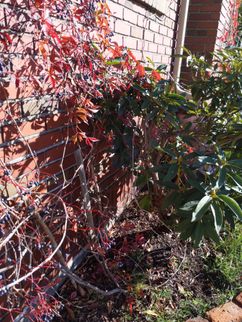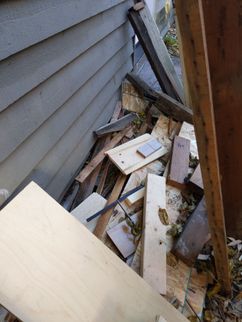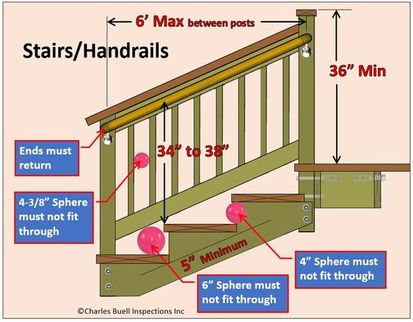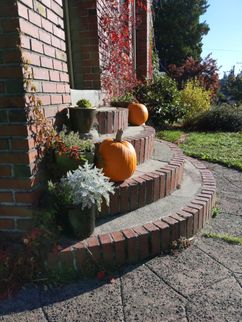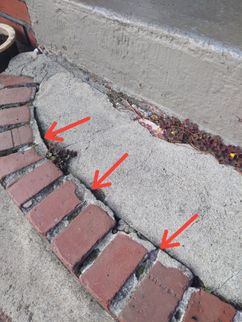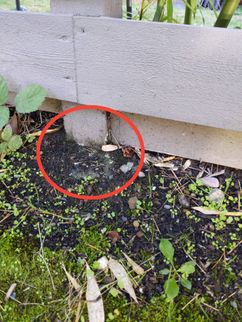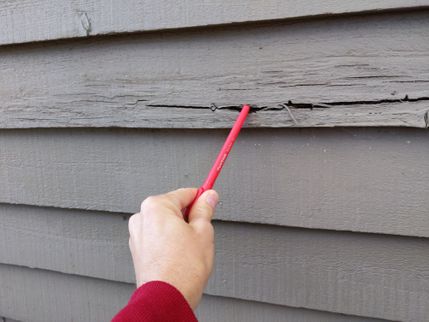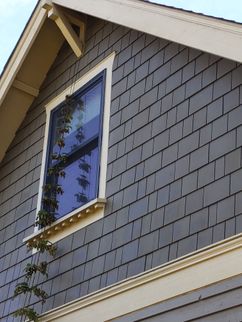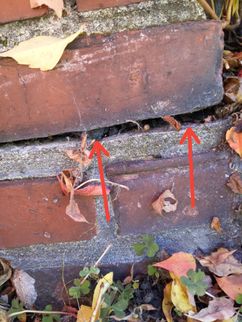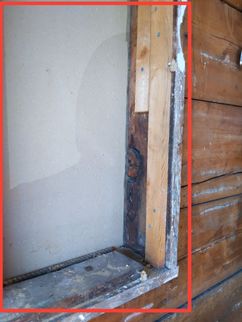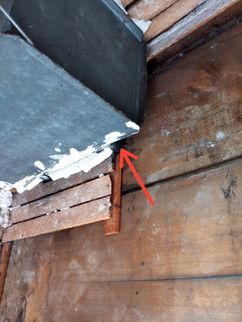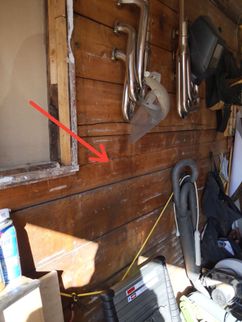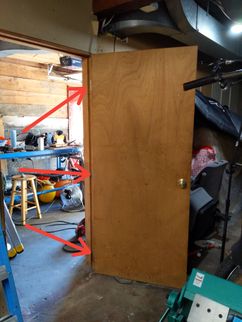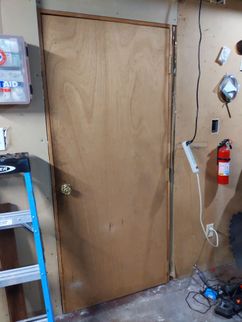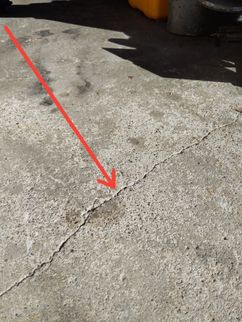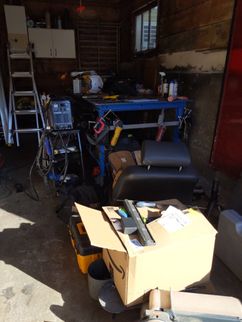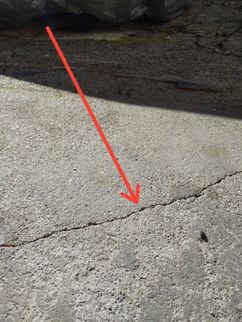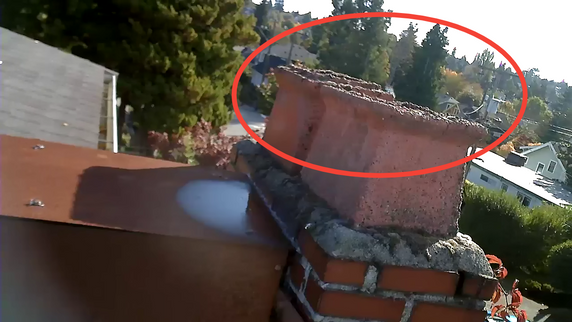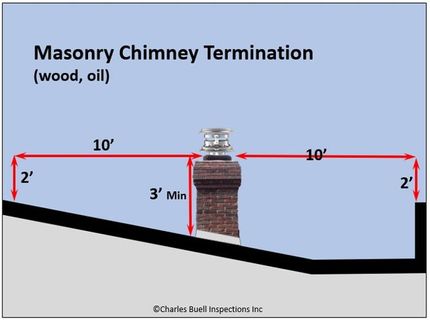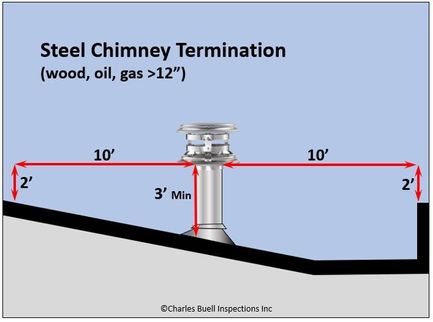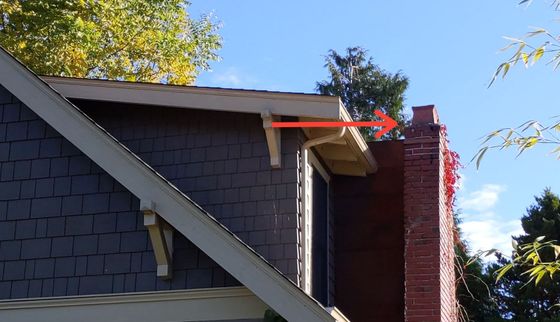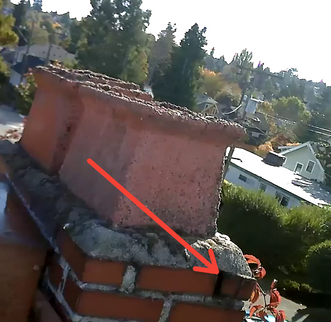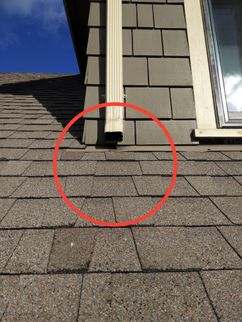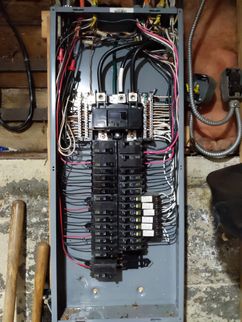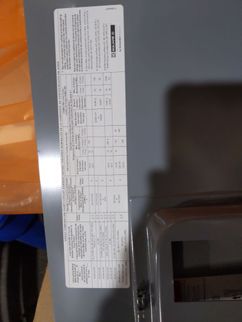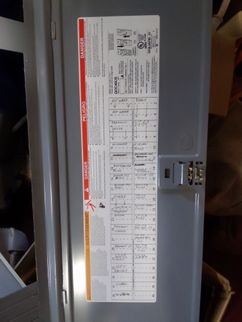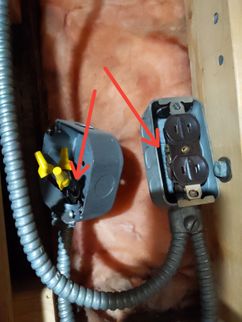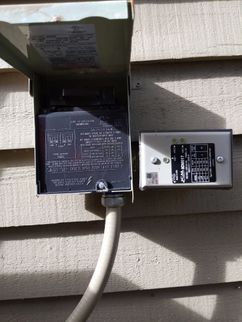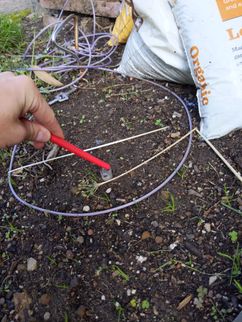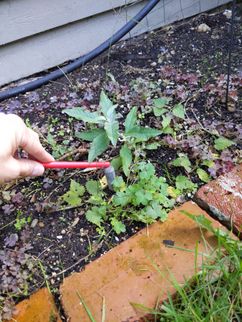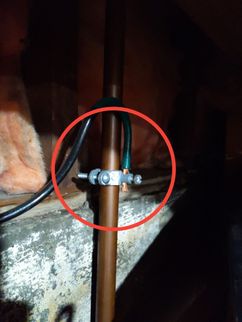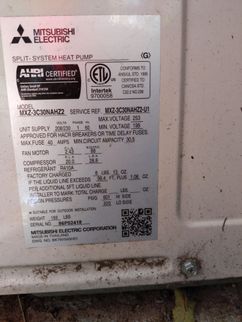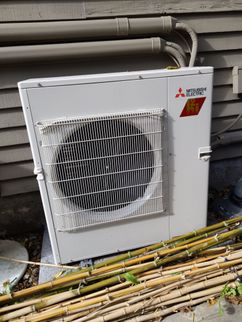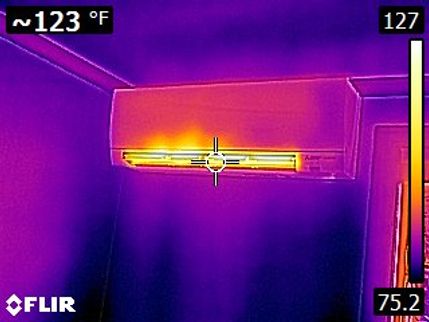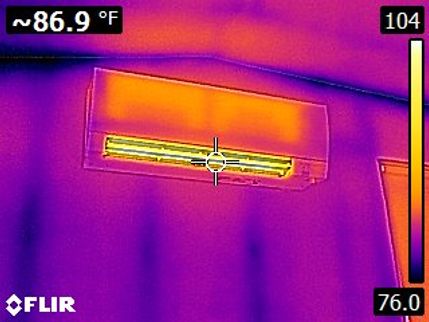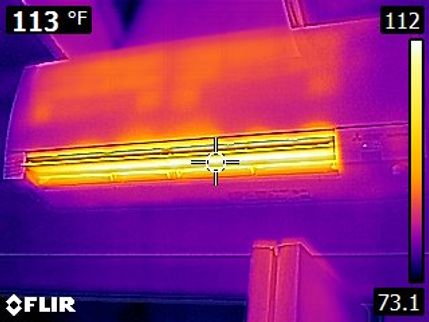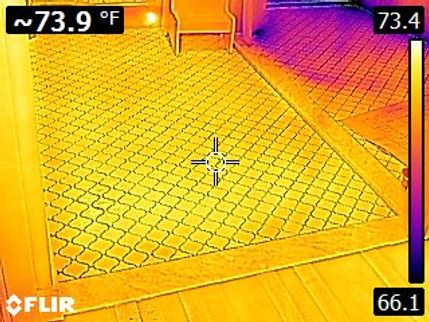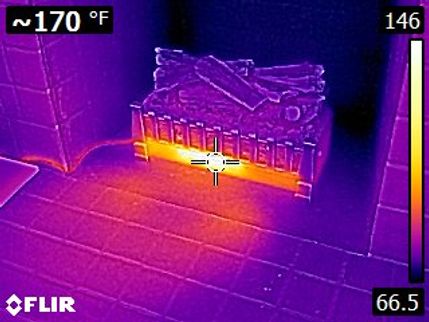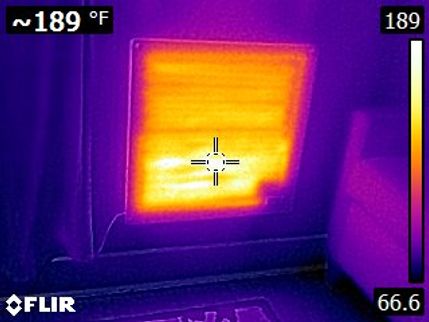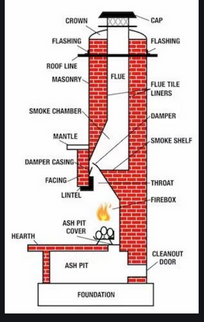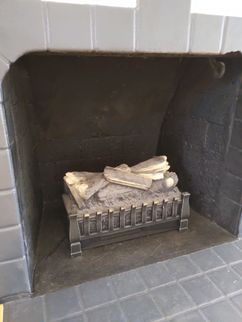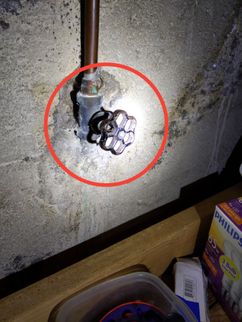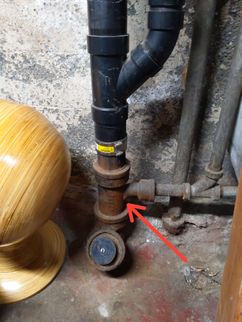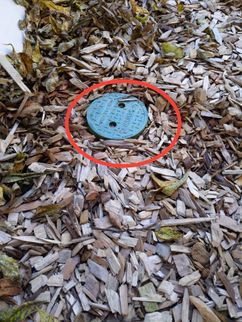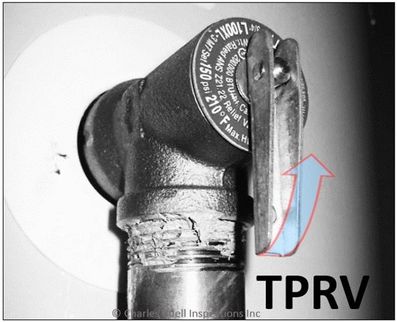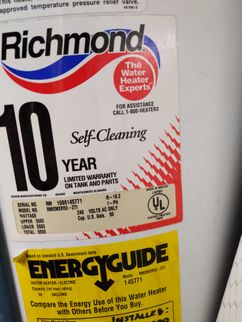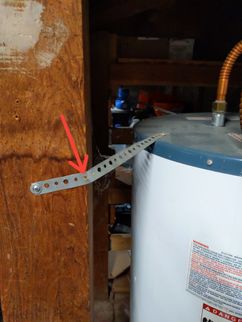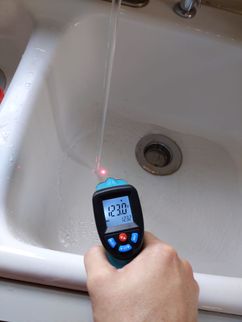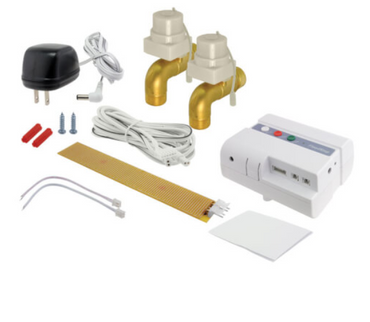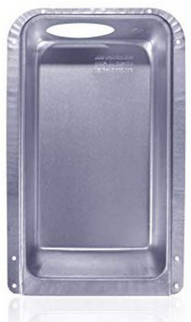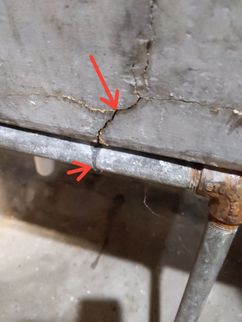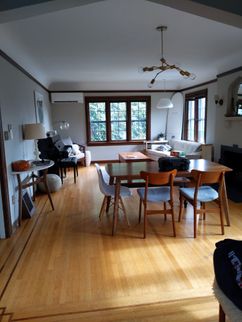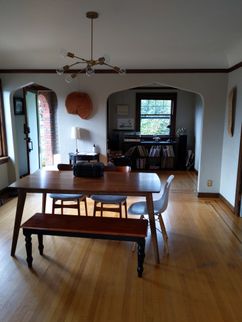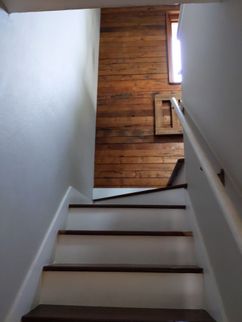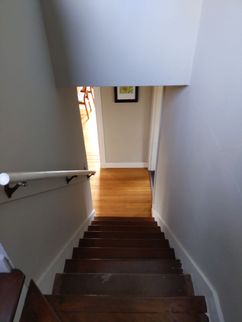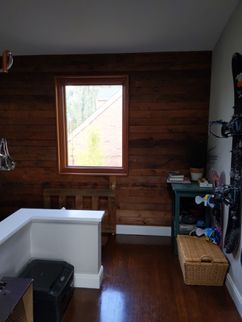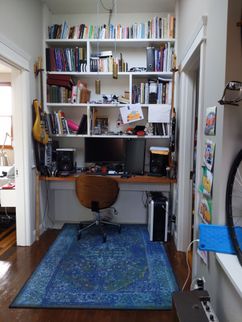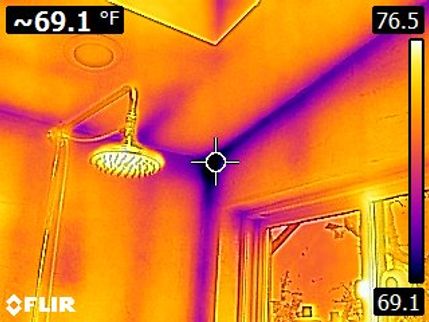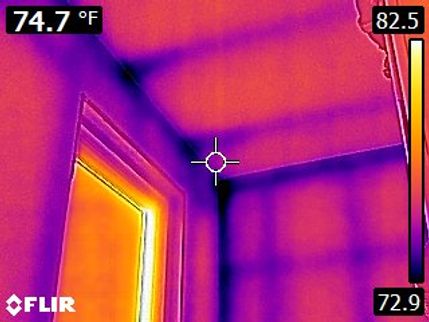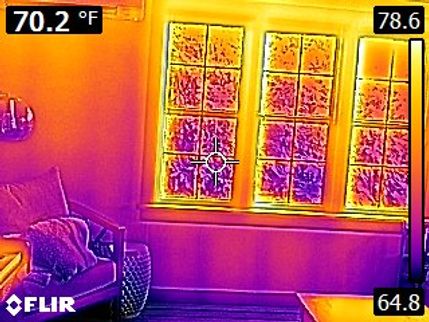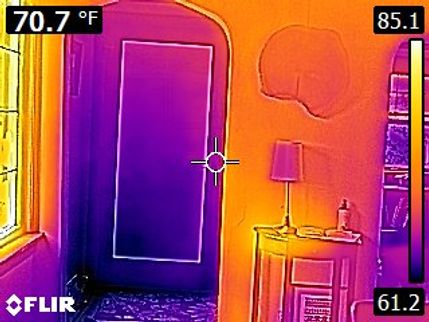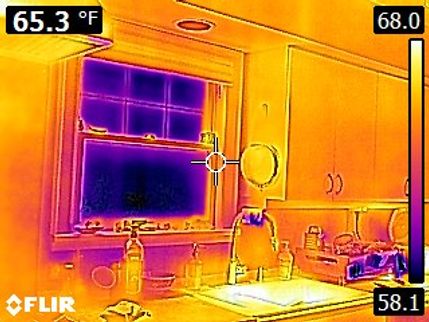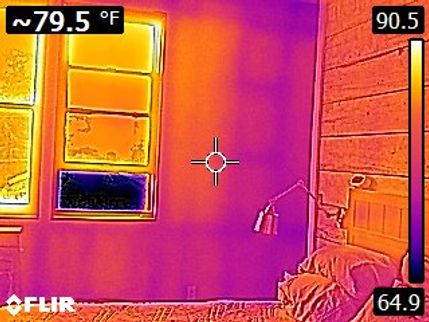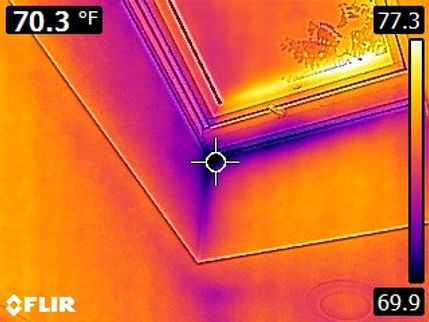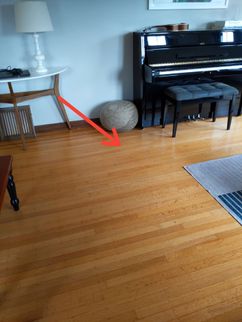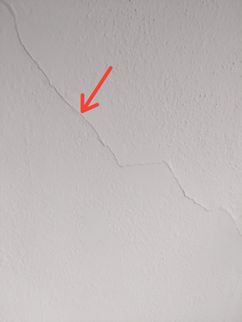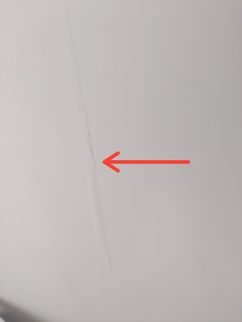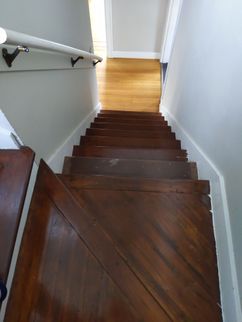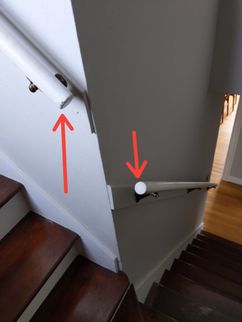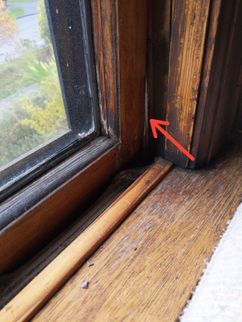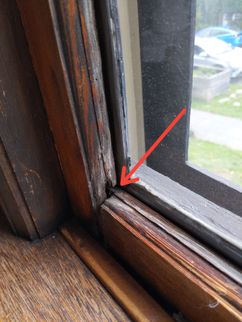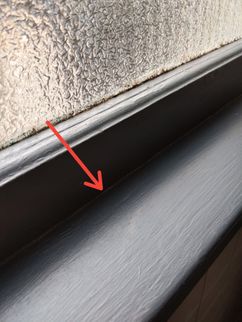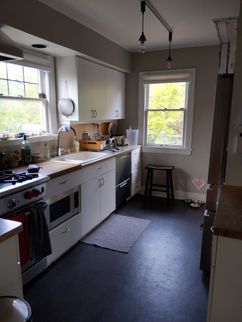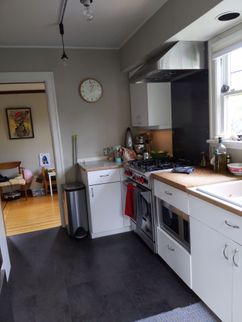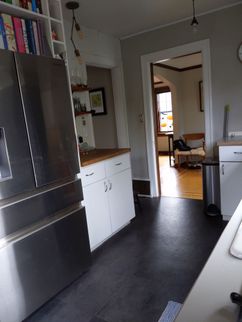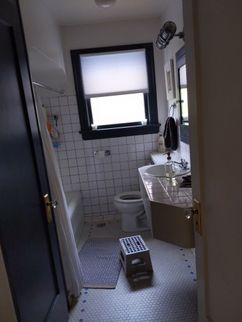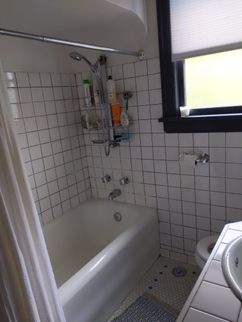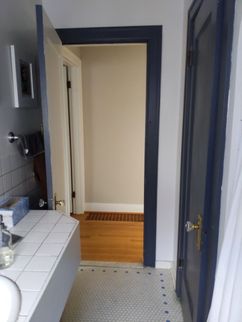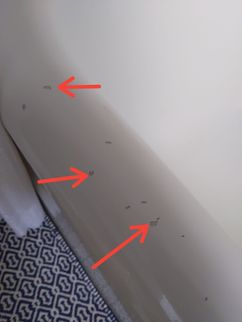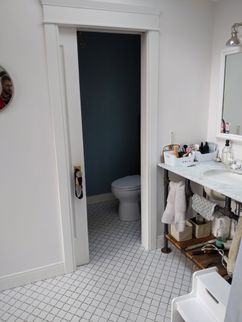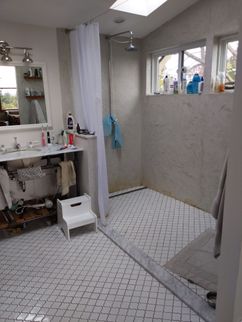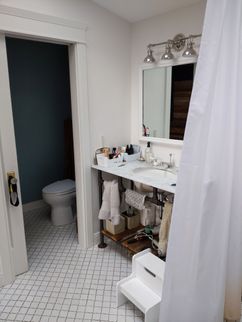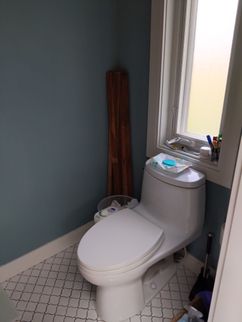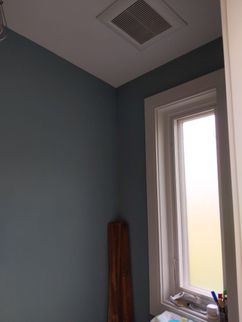The Scope and Purpose of a Home Inspection
Purchasing property involves risk
The purpose of a home inspection is to help reduce the risk associated with the purchase of a structure by providing a professional opinion about the overall condition of the structure. A home inspection is a limited visual inspection and it cannot eliminate this risk. Some homes present more risks than others. We cannot control this, but we try to help educate you about what we don’t know during the inspection process. This is more difficult to convey in a report and one of many reasons why we recommend that you attend the inspection.
A home inspection is not an insurance policy
This report does not substitute for or serve as a warranty or guarantee of any kind. Home warranties can be purchased separately from insuring firms that provide this service.
A home inspection is visual and not destructive
The descriptions and observations in this report are based on a visual inspection of the structure. We inspect the aspects of the structure that can be viewed without dismantling, damaging or disfiguring the structure and without moving furniture and interior furnishings. Areas that are concealed, hidden or inaccessible to view are not covered by this inspection. Some systems cannot be tested during this inspection as testing risks damaging the building. For example, overflow drains on bathtubs are generally not tested because if they were found to be leaking they could damage the finishes below. Our procedures involve non-invasive investigation and non-destructive testing which will limit the scope of the inspection.
This is not an inspection for code compliance
This inspection and report are not intended for city / local code compliance. During the construction process structures are inspected for code compliance by municipal inspectors. Framing is open at this time and conditions can be fully viewed. Framing is not open during inspections of finished homes, and this limits the inspection. All houses fall out of code compliance shortly after they are built, as the codes continually change. National codes are augmented at least every three years for all of the varying disciplines. Municipalities can choose to adopt and phase in sections of the codes on their own timetables. There are generally no requirements to bring older homes into compliance unless substantial renovation is being done.
This is just our opinion
Construction techniques and standards vary. There is no one way to build a house or install a system in a house. The observations in this report are the opinions of the home inspector. Other inspectors and contractors are likely to have some differing opinions. You are welcome to seek opinions from other professionals.
The scope of this inspection
This inspection will include the following systems: exterior, roof, structure, drainage, foundation, attic, interior, plumbing, electrical and heating. The evaluation will be based on limited observations that are primarily visual and non-invasive. This inspection and report are not intended to be technically exhaustive.
For more about the scope of a home inspection see: ASHI National Standards at http://www.homeinspector.org/Standards-of-Practice or Washington State Home Inspection Standards at http://app.leg.wa.gov/RCW/default.aspx?cite=18.280.030
Your expectations
The overall goal of a home inspection is to help ensure that your expectations are appropriate with the house you are proposing to buy. To this end we assist with discovery by showing and documenting observations during the home inspection. This should not be mistaken for a technically exhaustive inspection designed to uncover every defect with a building. Such inspections are available but they are generally cost-prohibitive to most homebuyers.
Your participation is requested
Your presence is requested during this inspection. A written report will not substitute for all the possible information that can be conveyed verbally by a shared visual observation of the conditions of the property.
How to Read This Report
Getting the Information to You
This report is designed to deliver important and technical information in a way that is easy for anyone to access and understand. If you are in a hurry, you can take a quick look at our "Summary Page” and quickly get critical information for important decision making. However, we strongly recommend that you take the time to read the full Report, which includes digital photographs, captions, diagrams, descriptions, videos and hot links to additional information.
The best way to get the layers of information that are presented in this report is to read your report online, which will allow you to expand your learning about your house. You will notice some words or series of words highlighted in blue and underlined – clicking on these will provide you with a link to additional information.
This report can also be printed on paper or to a PDF document.
Chapters and Sections
This report is divided into chapters that parcel the home into logical inspection components. Each chapter is broken into sections that relate to a specific system or component of the home. You can navigate between chapters with the click of a button on the left side margin.
Most sections will contain some descriptive information done in black font. Observation narrative, done in colored boxes, will be included if a system or component is found to be significantly deficient in some way or if we wish to provide helpful additional information about the system or the scope of our inspection. If a system or component of the home was deemed to be in satisfactory or serviceable condition, there may be no narrative observation comments in that section and it may simply say “tested,” or “inspected.”
Observation Labels
All narrative observations are colored, numbered and labeled to help you find, refer to, and understand the severity of the observation. Observation colors and labels used in this report are:
- Major Concern:Repair items that may cost significant money to correct now or in the near future, or items that require immediate attention to prevent additional damage or eliminate safety hazards.
- Repair:Repair and maintenance items noted during inspection. Please note that some repair items can be expensive to correct such as re-finishing hardwood floors, but are considered simply repair items due to their cosmetic nature.
- Recommended Maintenance:These are repair items that should be considered "routine home ownership items," such as servicing the furnace, cleaning the gutters or changing the air filters in the furnace.
- Improve:Observations that are not necessarily defects, but which could be improved for safety, efficiency, or reliability reasons.
- Monitor:Items that should be watched to see if correction may be needed in the future.
- Due Diligence:Observation such as a buried oil tank that may require further investigation to determine the severity and / or urgency of repair.
- Future Project:A repair that may be deferred for some time but should be on the radar for repair or replacement in the near future.
- Efficiency:Denotes observations that are needed to make the home more energy efficient as well as to bring the home up to modern insulation standards. This category typically includes windows and insulation. Other items, such as lighting and appliances, are not inspected for their energy status.
- Completed:Items that were initially an issue but have since been completed.
- Note:Refers to aside information and /or any comments elaborating on descriptions of systems in the home or limitations to the home inspection.
- Description:Detailed description of various aspects of the property noted during the inspection.
Pest Inspection
All items with the bug logo () are part of a structural pest inspection. If your inspector included a structural pest inspection as a part of the scope of your home inspection, you can distinguish pest inspection items by this logo. You can also go to the pest inspection summary page to see a summary of the items that are part of a pest inspection.
Summary Page
The Summary Page is designed as a bulleted overview of all the observations noted during inspection. This helpful overview is not a substitution for reading the entire inspection report. The entire report must be read to get a complete understanding of this inspection report as the Summary Page does not include photographs or photo captions.
Moisture Meter Testing
Where moisture meter testing is indicated in this report aGeneral MMD7NP was used.
Summary
Major Concerns
- G-13 Grounds:
Overall, numerous repairs are needed to the exterior stairs to ensure safe and reliable performance. I recommend additional inspection of the exterior stairs by a qualified general contractor. Examples of observations noted during inspection include: Lack of handrail, cracking and deterioration of the cement, uneven treads leading to a trip hazard.
Repairs
- G-2 Grounds:
Eliminate wood /soil contact to reduce the chances for rot and pest damage and repair any hidden rot as needed - see west side. Generally, a 6-inch clearance between soils and wood is recommended. This is often not realistic on older homes, but repairs should be made to get as much clearance as is possible and all contact with the soils should be eliminated.
- G-4 Grounds:
The grade of the yard is slopping toward the building - see west side. Standards recommend a quarter inch / foot slope away from the building or better.
- G-10 Grounds:
Portions of the walkway flatwork around the home are settling creating trip hazards - see driveway by garage and back patio. Hire a qualified general contractor to further investigate and repair to eliminate all trip hazards and ensure a reliable walking surface.
- G-12 Grounds:
To eliminate a condition conducive to wood destroying organisms, remove the wood pile that is stacked up near the building. Remove away from the structure and store in a dry place.
- G-14 Grounds:
Eliminate wood / soils contact at the fencing to eliminate a condition conducive to wood destroying organisms. Often, gravel is used as back fill against a fence. This acts as a capillary break and helps keep the base of the wood dry.
- EDPB-1 Exteriors, Decks, Porches and Balconies: Localized rot repairs are needed to the exterior siding. Hire a licensed general contractor to further evaluate and repair the exterior siding system. Repair and replace all damaged and decaying exterior wood as needed. Please note that this condition can indicate additional concealed damage that is not visible to inspection. Examples of specific observations noted during inspection include:
- EDPB-3 Exteriors, Decks, Porches and Balconies:
Failing mortar was noted between the brick. While brick siding is generally a low-maintenance product, mortar repair or re-pointing is occasionally required. This can be expensive. Hire a qualified masonry contractor to further evaluate this masonry siding and make repairs as needed.
- G1-2 Garage:
Multiple unprotected openings were found in the garage wall fire separation - see holes in sheetrock at the garage door brackets. This should be repaired to complete the fire separation. Standards recommend complete sheetrock walls and ceilings between the garage and all habitable space. Use type C or type X sheetrock as needed to complete large openings in the fire separation and seal up all small gaps in the walls with fire stop caulking or drywall mud as needed.
- G1-4 Garage:
The self-closing hinges on the garage man-door are missing. This safety device is recommend to ensure the door to the garage is closed to keep pollutants and even fire from spreading into the house. This is a requirement that has been enforced and then removed from building standards over the years. It is recommended now, and I think a best-practices for improved safety.
- G1-5 Garage:
This door may be fire rated but no labeling is present. - The door between the house and the garage is not a listed fire resistant door. Standards are for the door to be steel or solid wood - min 1 and 3/8 inches thick or a 20-min rated door. This should be updated for improved safety.
- RCG-3 Roof, Chimney and Gutters:
A rain cap and spark arrestor is recommended for the chimney flue to prevent water damage inside the flue, to reduce risks of bird and inspect entry into the flue and to reduce risks from sparks exiting the flue.
- RCG-4 Roof, Chimney and Gutters:
Inadequate clearances were noted for the chimney termination. Chimneys should be three feet above the roof where the chimney penetrates through the roof and two feet above anything within ten feet of the chimney. All trees and branches should be kept trimmed away as needed. Hire a chimney sweep to further evaluate and repair.
- RCG-5 Roof, Chimney and Gutters:
Failing mortar was noted at the masonry chimney above the roof line. This condition risks increased water entry and penetration into the masonry chimney which can lead to water damage, loose bricks and eventually a failing structure. Hire a licensed masonry contractor to further evaluate and repair the masonry chimney as recommended.
- E-2 Electrical:
The open electrical junction box needs to be covered for improved safety - see basement. This is as simple as installing a cover plate over the box to protect the wiring. Sometimes, an extension ring is needed if finishes are covering the box. Repair as needed for improved safety.
- E-8 Electrical:
Have the electrical earthing system checked by a licensed electrician. The grounding rods noted during visual inspection were not fully driven - these should be driven all the way into the ground. The earthing system is an important safety feature which is a designed electrical path to dissipate a static discharge voltage (such as Lightning) to earth. General standards are to have two grounding rods at least 6 feet apart if there is not a UFER ground employed.
- HCFV-7 Heating, Cooling, Fireplaces and Ventilation:
This building has no provisions for automatic mechanical ventilation - I did not find a 24 hour timer for a fan anywhere - typical for a building of this age. Installing a bath or laundry fan on a 24 hour timer is recommended to ensure mechanical air changes. This can help keep relative humidity in check. As a general rule, keep relative humidity below 55% in cold weather to reduce chances for condensation. You can monitor relative humidity with inexpensive temperature and relative humidity gauges. For a nice fan system I recommend looking at Panasonic Whisper Green fans - these do not rely on a timer and run continuously to facilitate air changes. http://www.panasonic.com/business/building-products/ventilation-systems/products/whisper-green.asp
- P-10 Plumbing:
Install listed seismic straps to support the water heater in the event of an earthquake - plumber's tape is not considered an adequate support. Two listed seismic straps are recommended one for the top 1/3rd and one for the bottom 1/3rd of the tank.
- P-12 Plumbing:
This is a very old water heater. Replacement is recommended for improved reliability as this unit could fail at any point. The average life of these water heaters is 8-20 years. The service life of a water heater will depend on a variety of factors such as water quality and regular scheduled maintenance such as flushing the tank and replacing sacrificial anodes.
- LAP-4 Laundry and Additional Plumbing:
The old concrete laundry sink is leaking and requires repair. Often the cost to repair these sinks is greater than their value. Some people love the retro look of these sinks and want to go through with the effort to repair and seal the concrete and replace the old waste lines. Replace or repair this sink as desired.
- I-2 Interior:
Fairly routine light plaster cracks were noted in walls and ceilings. This is characteristic of old plaster walls and does not require repair unless the keys that bond the plaster to the lath fail. Light surface cracking can be repaired prior to painting as desired. When larger problems develop with how the plaster is bonding to the lath, more extensive repairs can be needed.
- I-3 Interior:
The drywall / sheetrock finishes require some tune-up repair: See localized cracking, nail pops and minor cracks. No red flags were found to indicate structural movement, but this finishes are not in great condition. Repair sheetrock blemishes as desired.
- I-6 Interior:
The ends of the hand rail should return into the wall to prevent clothing or accessories from catching on the end of the railing and creating a trip hazard.
- I-7 Interior:
Some of the windows in this home are old wood windows that require maintenance and repair. They are in fairly typical condition for old wood windows. You need to decide how you want to approach the windows in this home as they are generally older and do not comply with modern standards for safety glass and energy efficiency. Repairs can be made on an as needed basis and efficiency can be added with storm windows and curtains. Existing windows that have character are often worth preserving and restoring, where windows that are in worse condition and have less character may be good candidates for replacement.
- I-8 Interior:
Many of the windows are painted shut and are not performing as intended. I recommend cutting open all stuck windows and implementing repairs to sash weights as needed to ensure reliable window performance.
- FB-4 Family Bathroom:
The stopper to the family bathroom sink is missing - install proper stopper system.
- FB-2 Family Bathroom:
Chips were noted in the painted finish of the family bath bathtub. This is mostly cosmetic, but over time it can cause corrosion and eventually damage the tub. Hire a specialist to repair the chips before tub replacement becomes necessary.
- MB3-3 Master Bathroom:
The stopper to the master bathroom sink is missing - install proper stopper system.
- MB3-2 Master Bathroom:
The toilet seat in the master bathroom is loose and requires adjustment or replacement for reliable performance.
Recommended Maintenance Items
- G-11 Grounds:
All trees, branches and vegetation should be pruned at least 12 inches away from the building to eliminate a condition conducive to wood destroying organisms and a path for rodent entry - see west side trees and bushes especially.
- RCG-6 Roof, Chimney and Gutters:
The NFPA (National Fire Protection Association) recommends an annual inspection of all chimneys, fireplaces, solid fuel-burning appliances, and vents. They also recommend an NFPA 211 Standard, Level II inspection upon sale or transfer of the property. A Level II inspection includes, not only cleaning the interior of the chimney pipe, but also the use of specialized tools and testing procedures such as video cameras, etc. to thoroughly evaluate the serviceability of the entire flue lining and fireplace/chimney system. Level II inspections are not always needed, especially for short simple flues that can be inspected visually after a cleaning. If a chimney cleaning has not been performed over the past 12 months, such an inspection is recommended before home changes ownership---for fire safety reasons. Implement any repairs as recommended.
- RCG-8 Roof, Chimney and Gutters:
The gutters are clogged with organic debris and require cleaning to ensure proper control of roof runoff. Clean the gutters and ensure they are unobstructed, leak free and properly sloped to drain. This is routine house maintenance; I would expect the need to clean gutters and downspouts regularly.
- LAP-3 Laundry and Additional Plumbing:
The dryer exhaust ductwork is dirty and needs to be cleaned for improved safety. This is important regular maintenance to eliminate a potential fire hazard.
Improves
- G1-3 Garage:
The use of sheetrock or gypsum board is recommended to make a fire separation between the garage and the house. This will improve the safety of the house in the event of an accidental fire in the garage. It is common in older homes to have wood walls in the garage. This would not be considered safe by modern fire standards.
- RCG-7 Roof, Chimney and Gutters:
Several of the downspouts on the upper gutter system are terminating onto the lower roof. This is industry standard practice but it will prematurely deteriorate the roofing shingles in these locations. I recommend extending the downspouts into lower gutters to better protect the roof.
- LAP-1 Laundry and Additional Plumbing:
A moisture alarm with water shut-off features is recommended under the washing machine to protect against accidental leaks in the supply hoses. Pans can be effective when there is a drain, but even these will not protect against a burst supply connector. A moisture alarm with automatic shut-off will. Watts is a brand I have seen installed: Link.
- SB-1 Structure and Basement:
As always with older homes steps can be taken to improve the seismic stability of this home. Improvements include bolting the home to the foundation, adding sheer panels to pony walls and installing positive connections between posts and beams. Consult with a licensed general contractor or company specializing in seismic retrofits to further evaluate and improve the structure.
Monitors
- G-3 Grounds:
Some of the downspouts on this home were noted to be discharging into old storm drain pipe. No evidence of failure was noted, but these pipes are old and prone to clogging, backing up and below ground failure. Monitor after heavy rains and budget to update when doing other landscape projects. Failing sub-surface storm drains are one of the most common reasons for basement and crawl space moisture problems and can even lead to structural settlement.
- G-5 Grounds:
The rain barrels that are collecting roof runoff seem to have an overflow drain; this is good. These can fill up quickly in a rain storm. Be sure to keep these clean and ensure they are not spilling water next to then house.
- G-6 Grounds:
Important catch basins were noted around the property - see driveway. These are designed to capture surface runoff and divert water around the building. Be sure to keep these drains clear, especially before large rain storms.
- G-7 Grounds:
The driveway is sloping toward the house and garage. This will allow water to drain toward the garage and could lead to water intrusion problems during heavy rains. I noted a drain at the foot of the drive - be sure this drain remains free from obstructions.
- G-8 Grounds:
Typical cracks were noted in driveway flatwork. No immediate repair appears necessary, though water will continue to deteriorate the surface until the driveway is repaired or replaced.
- G-9 Grounds:
Cracks were noted in walkway flatwork. No immediate repair appears necessary, though water will continue to deteriorate the surface until the walkway is repaired or replaced.
- EDPB-4 Exteriors, Decks, Porches and Balconies:
Many of the wood windows in this home are exposed to the weather and will require regular painting and sealing maintenance to preserve the windows and prevent decay. The windows were in satisfactory condition at the time of this inspection. I checked the windows for wood decay and damaged during inspection.
- HCFV-3 Heating, Cooling, Fireplaces and Ventilation:
The ductless heat pump heads have filters that need to be cleaned periodically. These were clean at the time of inspection.
- HCFV-4 Heating, Cooling, Fireplaces and Ventilation:
I recommend keeping the ductless heat pump system on a routine service schedule. These systems should be cleaned and serviced annually for efficient operation and to prolong the useful service life of this equipment. This system is new and was operating as intended during inspection. Observations noted during inspection include:
- P-7 Plumbing:
Some of the waste plumbing system in this building is done with old metal pipe, while some of the waste pipe has been updated with plastic. No leaks were noted at the time of inspection, but updating and on-going repairs could be needed at any time. Old metal pipes are subject to internal corrosion which can make it impossible to spot older weaker pipe until it starts to leak. During any renovations to the home be sure to have this old piping evaluated and updated as recommended by a licensed plumber. As a general rule the old cast iron pipe often lasts a very long time - even as much as 100 years. Galvanized and copper waste pipe can have a shorter useful service life - sometime 50 years. The service life from this pipe has a lot to do with water quality and occupant behavior - use of cleaning chemicals like Drain-O can be tough on metal pipes.
- I-9 Interior:
Minor to moderate floor settlement was noted in the house. Inquire with the seller for any history of repairs or movement. No signs of recent movement were visible at the time of inspection.
Due Diligences
- FSD-2 Fuel Storage and Distribution:
Given the age of the house, there is a good chance that the house was once heated with heating oil and there may be an old oil storage tank on the property that was buried below ground. Be sure to obtain a decommissioning statement for this tank or evidence that it has been removed. If no such records exist, hire a tank locator service to further evaluate the property as there is a risk of a hidden pollution liability if the tank has not been properly removed or decommissioned. If an old abandoned tank is discovered, I recommend having it decommissioned or removed prior to closing. More information on buried oil tanks can be found by calling PLIA @ 800-822-3905 or going to http://www.plia.wa.gov/heating/insurance.htm
- RCG-2 Roof, Chimney and Gutters:
The roofing material on this building is a recently installed three tab shingle. These are often rated as 25-30 year shingles. In practice, as a roof assembly, these tend to last about 18-23 years depending on the quality of the installation, the steepness of the roof and the exposure. The installation appears neat and professional. Inquire with the seller about any warranty information for this roof. Many professional roofing companies will offer limited workmanship warranties. Please note that roofs are not a shingle. they are an assembly and they require regular cleaning and maintenance to keep them performing reliably.
- I-5 Interior:
The stairs to the 2nd floor are old non-conforming stairs. Modern stairs have specific safety requirements regarding the size and configuration of the stair treads, risers, guardrails and handrails. This is typical of older stairs and it will not be cost effective to correct. Use caution when navigating these stairs. Improvements could be made to the handrail system to improve the safety of the stairs. Consult with a qualified general contractor about options for improvements as feasible.
Future Projects
- P-2 Plumbing:
The main water pipe from the street to the home appears to be done with old galvanized steel pipe. This pipe could require updating at any time. Evaluation of this pipe is beyond the scope of this inspection as the pipe is not visible. Keep this pipe in mind for updating should you do any other digging in the front of the home between the house and the water meter.
- FB-3 Family Bathroom:
The family bathroom on the main floor is mostly original. A remodel by a general contractor may be required in the future.
Completed Items
- P-5 Plumbing:
An evaluation of the sewer line below the ground is beyond the scope of this inspection. Due to the age and location of the building, a sewer scope is recommended to further evaluate the sewer line and the below ground connections between the house and the municipal sewer line. Sewer scopes are done using video cameras and can reveal the materials, condition and reliability of the sewer line. If that has been done recently, I recommend disclosing available information. If this has not been done recently, this would be valuable information to disclose to a buyer.
Notes
- G-15 Grounds:
Please note that the storage shed was locked during inspection and inaccessible to inspection.
- EDPB-2 Exteriors, Decks, Porches and Balconies:
Cedar shingles are an excellent siding material for our climate. The shingles appeared to be well-installed with normal reveals, and offset spacing. Flashing seemed standard for the age of construction. Siding can be cleaned and re-stained depending on desire for appearance. Cedar has a natural resistance to decay so staining is not necessary though it can help to lengthen the useful service life of this siding.
- FSD-3 Fuel Storage and Distribution:
Attached, please find the link to the database of oil tanks fro the Seattle Fire Department:
- G1-6 Garage:
Typical cracks were noted in the concrete garage slab. No control joints were used in the pour here so the concrete will crack. You can fill the cracks with a masonry rated caulking, but no repair is needed at this time; this is a cosmetic defect.
- G1-7 Garage:
Extensive storage in the garage inhibited the view of most of the garage and limited visual inspection of this space.
- G1-1 Garage:
Typical cracks were noted in the concrete garage slab. No control joints were used in the pour here so the concrete will crack. You can fill the cracks with a masonry rated caulking, but no repair is needed at this time; this is a cosmetic defect.
- E-3 Electrical:
Lots of new wiring was noted suggesting that the building has had significant wiring updates. Inquire with the seller for any additional information regarding any permit history of wiring updates, receipts or the extent of the work performed.
- E-4 Electrical:
Carbon monoxide alarms were found and noted during inspection. Be sure to check these regularly. The standard is 1/ floor and 1 outside all sleeping areas.
- HCFV-2 Heating, Cooling, Fireplaces and Ventilation:
Heat pump located on east side of house.
- HCFV-5 Heating, Cooling, Fireplaces and Ventilation:
The heat pump system was tested in heating mode only as it was too cold to test in cooling mode. This means that the switching valve and condensate collection system could not be tested during this inspection today.
- HCFV-6 Heating, Cooling, Fireplaces and Ventilation:
Thermal Images Show Ductless Mini-splits Working
- HCFV-8 Heating, Cooling, Fireplaces and Ventilation:
During inspection today I manipulated the thermostats for the radiant floor pads. These are electric pads installed below the finish flooring. It appeared there was a temperature rise on the floor. For ideal comfort and efficiency with these heated floors I recommend programming the thermostats to come on at desired times of the day. Leaving these on all day can be a waste of energy and it can be hard to remember to turn them on and off.
- HCFV-9 Heating, Cooling, Fireplaces and Ventilation:
Electric fire place was present and tested.
- HCFV-10 Heating, Cooling, Fireplaces and Ventilation:
Wall panel heater was present in 1st floor bedroom.
- HCFV-12 Heating, Cooling, Fireplaces and Ventilation:
Fireplace appears to not be in use please contact a licensed professional for inspection before lighting a fire.
- P-4 Plumbing:
Main water shut off located on East North corner of the house just right of the electrical panel.
- P-8 Plumbing:
Sewer cleanouts in basement and backyard.
- P-9 Plumbing:
This shows the listing plate on the water heater.
- SB-2 Structure and Basement:
As a general rule, older basements are prone to seasonal dampness and moisture issues. This is because there were no industry standards to water proof foundations at the time this home was built. Today's basements will likely be sealed on the outside with concrete sealer over the foundation. On top of this a water-proofing fabric is applied which will divert water into a footing drain system at the base of the foundation; old basements usually have none of these water-proofing systems installed. Some old basements do stay dry - typically the result of a good site and good soil drainage around the building. This is impossible to evaluate or predict during a visual home inspection.
General Comments
Building Characteristics, Conditions and Limitations
Style of Home: Traditional
Type of Building : Single Family (2-story)
Approximate Square Footage: 2300
Attending the Inspection: Buyer and Buyer's Agent
Occupancy: Occupied
Animals Present: Yes, Cat/s present
Weather during the inspection: Clear
Approximate temperature during the inspection: Below 65[F]
Ground/Soil surface conditions: Damp
For the Purposes of This Report, the Front Door Faces: South
This home was occupied at the time of the inspection. Inspection of occupied homes presents some challenges as occupant belongings can obstruct visual inspection of and access to parts of the building. We do our best during inspection to work around belongings to discover as much as possible about the house without moving or damaging personal property, however, the presence of personal items does limit the inspection.
Grounds
Drainage and Lot Location
Clearance to Grade: Siding Too Close to Soils - Repair
Downspout Discharge: Below grade, Old Storm Drains
Site Description: Grade Toward Building
Eliminate wood /soil contact to reduce the chances for rot and pest damage and repair any hidden rot as needed - see west side. Generally, a 6-inch clearance between soils and wood is recommended. This is often not realistic on older homes, but repairs should be made to get as much clearance as is possible and all contact with the soils should be eliminated.
Some of the downspouts on this home were noted to be discharging into old storm drain pipe. No evidence of failure was noted, but these pipes are old and prone to clogging, backing up and below ground failure. Monitor after heavy rains and budget to update when doing other landscape projects. Failing sub-surface storm drains are one of the most common reasons for basement and crawl space moisture problems and can even lead to structural settlement.
The grade of the yard is slopping toward the building - see west side. Standards recommend a quarter inch / foot slope away from the building or better.
The rain barrels that are collecting roof runoff seem to have an overflow drain; this is good. These can fill up quickly in a rain storm. Be sure to keep these clean and ensure they are not spilling water next to then house.
Driveways/Walkways/Flatwork
Driveway: Concrete
Walkways: Concrete
The driveway is sloping toward the house and garage. This will allow water to drain toward the garage and could lead to water intrusion problems during heavy rains. I noted a drain at the foot of the drive - be sure this drain remains free from obstructions.
Typical cracks were noted in driveway flatwork. No immediate repair appears necessary, though water will continue to deteriorate the surface until the driveway is repaired or replaced.
Cracks were noted in walkway flatwork. No immediate repair appears necessary, though water will continue to deteriorate the surface until the walkway is repaired or replaced.
Window and Stairwells
Present
Grounds, Trees and Vegetation
Trees/Vegetation too near building: Yes - Prune Vegetation off House
All trees, branches and vegetation should be pruned at least 12 inches away from the building to eliminate a condition conducive to wood destroying organisms and a path for rodent entry - see west side trees and bushes especially.
Retaining Walls
Retaining Wall Material: None Noted
Exterior Stairs
Exterior Stairs: Non-standard, Numerous Repairs Needed
Overall, numerous repairs are needed to the exterior stairs to ensure safe and reliable performance. I recommend additional inspection of the exterior stairs by a qualified general contractor. Examples of observations noted during inspection include: Lack of handrail, cracking and deterioration of the cement, uneven treads leading to a trip hazard.
Fences
Exterior Fencing: Partial fencing noted, Wood to Soils Contact - Repair
Exteriors, Decks, Porches and Balconies
Siding and Trim
Trim Material: Wood
Siding Material: Cedar shingles, Wood
Cedar shingles are an excellent siding material for our climate. The shingles appeared to be well-installed with normal reveals, and offset spacing. Flashing seemed standard for the age of construction. Siding can be cleaned and re-stained depending on desire for appearance. Cedar has a natural resistance to decay so staining is not necessary though it can help to lengthen the useful service life of this siding.
Failing mortar was noted between the brick. While brick siding is generally a low-maintenance product, mortar repair or re-pointing is occasionally required. This can be expensive. Hire a qualified masonry contractor to further evaluate this masonry siding and make repairs as needed.
Eaves
Bead board
Exterior Doors
Solid core
Exterior Window Frames
Wood, Fiberglass
Many of the wood windows in this home are exposed to the weather and will require regular painting and sealing maintenance to preserve the windows and prevent decay. The windows were in satisfactory condition at the time of this inspection. I checked the windows for wood decay and damaged during inspection.
Fuel Storage and Distribution
Oil Storage
None noted
Given the age of the house, there is a good chance that the house was once heated with heating oil and there may be an old oil storage tank on the property that was buried below ground. Be sure to obtain a decommissioning statement for this tank or evidence that it has been removed. If no such records exist, hire a tank locator service to further evaluate the property as there is a risk of a hidden pollution liability if the tank has not been properly removed or decommissioned. If an old abandoned tank is discovered, I recommend having it decommissioned or removed prior to closing. More information on buried oil tanks can be found by calling PLIA @ 800-822-3905 or going to http://www.plia.wa.gov/heating/insurance.htm
Propane Storage
Storage Type: Above ground tank
Propane Tank Size: 5 gallons
Propane Tank Location: West side of house
Propane Shutoff Location: At tank
Gas Meter
None noted
Garage
Garage General
Multiple unprotected openings were found in the garage wall fire separation - see holes in sheetrock at the garage door brackets. This should be repaired to complete the fire separation. Standards recommend complete sheetrock walls and ceilings between the garage and all habitable space. Use type C or type X sheetrock as needed to complete large openings in the fire separation and seal up all small gaps in the walls with fire stop caulking or drywall mud as needed.
The use of sheetrock or gypsum board is recommended to make a fire separation between the garage and the house. This will improve the safety of the house in the event of an accidental fire in the garage. It is common in older homes to have wood walls in the garage. This would not be considered safe by modern fire standards.
The self-closing hinges on the garage man-door are missing. This safety device is recommend to ensure the door to the garage is closed to keep pollutants and even fire from spreading into the house. This is a requirement that has been enforced and then removed from building standards over the years. It is recommended now, and I think a best-practices for improved safety.
This door may be fire rated but no labeling is present. - The door between the house and the garage is not a listed fire resistant door. Standards are for the door to be steel or solid wood - min 1 and 3/8 inches thick or a 20-min rated door. This should be updated for improved safety.
Typical cracks were noted in the concrete garage slab. No control joints were used in the pour here so the concrete will crack. You can fill the cracks with a masonry rated caulking, but no repair is needed at this time; this is a cosmetic defect.
Garage Door and Automatic Opener
Automatic Garage Opener: Present, Laser Eyes
Garage Door Type: Wood
Garage Slab
Garage Slab: Concrete, Typical Cracks Noted
Roof, Chimney and Gutters
Roof Materials
Method of Roof Inspection: Viewed at top of ladder, Viewed with binoculars and remote camera
Roof Style: Gable
Flashings: Present and Visually Standard
Roof flashings are used to keep a roofing system water proof where the roofing material starts, stops, changes direction or is penetrated. During inspection, we look for standard flashing techniques that could be considered normal or standard in our region. Damaged, incomplete or non-standard flashings can be a sign of an older or less reliable roofing system and may require repair. Any non-standard flashings noted during inspection will be reported on below if found.
Roof Covering Materials: Three-tab composition shingle
Approximate Age of Roof Covering: 8-10 Years
Overlay Roof: No
The roofing material on this building is a recently installed three tab shingle. These are often rated as 25-30 year shingles. In practice, as a roof assembly, these tend to last about 18-23 years depending on the quality of the installation, the steepness of the roof and the exposure. The installation appears neat and professional. Inquire with the seller about any warranty information for this roof. Many professional roofing companies will offer limited workmanship warranties. Please note that roofs are not a shingle. they are an assembly and they require regular cleaning and maintenance to keep them performing reliably.
Chimneys
Present
Chimney Material: Masonry
Chimney Flue Liners: Not visible
A rain cap and spark arrestor is recommended for the chimney flue to prevent water damage inside the flue, to reduce risks of bird and inspect entry into the flue and to reduce risks from sparks exiting the flue.
Inadequate clearances were noted for the chimney termination. Chimneys should be three feet above the roof where the chimney penetrates through the roof and two feet above anything within ten feet of the chimney. All trees and branches should be kept trimmed away as needed. Hire a chimney sweep to further evaluate and repair.
Failing mortar was noted at the masonry chimney above the roof line. This condition risks increased water entry and penetration into the masonry chimney which can lead to water damage, loose bricks and eventually a failing structure. Hire a licensed masonry contractor to further evaluate and repair the masonry chimney as recommended.
The NFPA (National Fire Protection Association) recommends an annual inspection of all chimneys, fireplaces, solid fuel-burning appliances, and vents. They also recommend an NFPA 211 Standard, Level II inspection upon sale or transfer of the property. A Level II inspection includes, not only cleaning the interior of the chimney pipe, but also the use of specialized tools and testing procedures such as video cameras, etc. to thoroughly evaluate the serviceability of the entire flue lining and fireplace/chimney system. Level II inspections are not always needed, especially for short simple flues that can be inspected visually after a cleaning. If a chimney cleaning has not been performed over the past 12 months, such an inspection is recommended before home changes ownership---for fire safety reasons. Implement any repairs as recommended.
Skylights
Insulated curb style, Opening
Gutters and Downspouts
Gutter and Downspout Materials: Seamless Aluminum
Several of the downspouts on the upper gutter system are terminating onto the lower roof. This is industry standard practice but it will prematurely deteriorate the roofing shingles in these locations. I recommend extending the downspouts into lower gutters to better protect the roof.
The gutters are clogged with organic debris and require cleaning to ensure proper control of roof runoff. Clean the gutters and ensure they are unobstructed, leak free and properly sloped to drain. This is routine house maintenance; I would expect the need to clean gutters and downspouts regularly.
Attic and Roof Cavity Ventilation
Attic Ventilation Method: Soffit vents, No access. Vaulted ceiling
Attic and roof cavity ventilation is a frequently-misunderstood element of residential construction. All roof cavities are required to have ventilation. The general default standard is 1 to 150 of the attic area and ideally, this comes from at least 60% lower roof cavity ventilation and 40% upper, but this is a wild over-simplifications of the subject. As a good guiding principle the most important elements for healthy attic spaces, which are traditionally insulated and ventilated are:
- Make sure the ceiling between the living space and the attic is airtight
- Ventilate consistently across the whole lower part of the roof cavity with low, intake soffit venting
- Upper roof cavity venting is less important and if over-installed can exacerbate air migration into the attic from the living space.
- Avoid power ventilators which can depressurize the attic and exacerbate air migration from the house into the attic.
For more information, please see: Link
Electrical
Electric Service
Service Entrance: Above Ground
Meter Base Amperage: 200
Service Equipment
Service Entrance (SE) conductor Size: Copper, #3, 110 amps
Main Panel Amperage: 125 amps
Electric Service Amperage: 200 amps
Main Electric Panel Location: Basement
Panel Manufacturer: Square D
Branch Wiring
Wire Material: Copper
Wiring Method: Armored BX cable, Non-metallic sheathed cable
The open electrical junction box needs to be covered for improved safety - see basement. This is as simple as installing a cover plate over the box to protect the wiring. Sometimes, an extension ring is needed if finishes are covering the box. Repair as needed for improved safety.
Lots of new wiring was noted suggesting that the building has had significant wiring updates. Inquire with the seller for any additional information regarding any permit history of wiring updates, receipts or the extent of the work performed.
Appliance Disconnects
Disconnects Noted: Heat Pump
Receptacles and Fixtures
Inspection Method: Random Testing
Electric Receptacles: Three wire receptacles
Ceiling Fans
Ceiling Fans: Present and Tested
Smoke and Carbon Monoxide Alarm Systems
CO Alarms Noted: Outside all Sleeping Areas
Outside all Sleeping Areas On Main Floor
On Main Floor On 2nd Floor
On 2nd Floor In Basement
In Basement On 3rd Floor
On 3rd Floor In Bonus Room
In Bonus Room
CO Alarms: Present
The installation of carbon monoxide alarms is recommended for all homes that have fuel burning appliances such as gas or oil furnaces, gas water heaters, gas ovens and cook-tops, gas fireplaces and wood stoves. In addition, Washington State law (WAC 51-51-0315) now requires UL 2034 approved carbon monoxide alarms in ALL homes and condominiums being sold in Washington State. The location should be: at least one alarm outside of all sleeping areas and one on each floor of the house. Best practices are to have these alarms hardwired with a battery back-up - though requirements are for the installation to meet manufacturer's specifications. Carbon monoxide is a colorless, odorless gas that can cause sickness, nausea and even death. Alarms have a useful service life of roughly 6 years, so changing them more frequently than smoke alarms is recommended.
Smoke Alarms Noted: On Main Floor
On Main Floor On 2nd Floor
On 2nd Floor In Basement
In Basement On 3rd Floor
On 3rd Floor In All Bedrooms
In All Bedrooms In Bonus Room
In Bonus Room
Smoke Alarms: Present
During the home inspection, I try and test a representative sample of the smoke alarms by using the test button on the alarms. This is NOT an accurate test of the sensor just a test to see if the unit is powered. For reliability, fire marshals recommended updating smoke alarms every 10 years and changing batters bi-annually. The latest data indicate that we should be using photo-electric technology in our smoke alarms for improved fire detection and to reduce problems with false alarms which can lead to disabling of this important safety system. Unfortunately, the alarms have to be removed to determine if they are photo-electric or ionization types. It is surprisingly complex to accurately test a smoke alarm system and determine the reliability, age, and type of sensor technology used, especially as many homes can have half a dozen or more alarms throughout the house. A complete evaluation of smoke alarms is beyond the scope of this inspection. For optimal fire safety, I recommend taking control of these important safety devices and learning about how to service and maintain your smoke alarm system to keep the building occupants safe. For more information, please read this link. For more information, please read this link.
Carbon monoxide alarms were found and noted during inspection. Be sure to check these regularly. The standard is 1/ floor and 1 outside all sleeping areas.
Electrical Grounding System
Have the electrical earthing system checked by a licensed electrician. The grounding rods noted during visual inspection were not fully driven - these should be driven all the way into the ground. The earthing system is an important safety feature which is a designed electrical path to dissipate a static discharge voltage (such as Lightning) to earth. General standards are to have two grounding rods at least 6 feet apart if there is not a UFER ground employed.
Heating, Cooling, Fireplaces and Ventilation
Heating System
Energy Source: Electricity
Heating Method: Mini-split heat pump
Manufacturer: Mitsubishi
Capacity: 30,000 BTU
Age: 2018
Last Service Record: None
Air Filters
Filtration Systems: Re-usable - Ductless
The ductless heat pump heads have filters that need to be cleaned periodically. These were clean at the time of inspection.
Cooling Systems and Heat Pumps
Air Conditioning / Heat Pump: Heat Pump Present
Manufacturer: Mitsubishi
Energy Source: Electric
I recommend keeping the ductless heat pump system on a routine service schedule. These systems should be cleaned and serviced annually for efficient operation and to prolong the useful service life of this equipment. This system is new and was operating as intended during inspection. Observations noted during inspection include:
The heat pump system was tested in heating mode only as it was too cold to test in cooling mode. This means that the switching valve and condensate collection system could not be tested during this inspection today.
Heating and Cooling Distribution Systems
Heat Source in Each Room: Present
Mechanical Ventilation Systems
Bath Fan Ducting: Ducted to exterior
Kitchen Fan Ducting: Ducted to exterior
Whole House Fans, Ventilation and HRVs: No Mechanical Ventilation Found - Old House
This building has no provisions for automatic mechanical ventilation - I did not find a 24 hour timer for a fan anywhere - typical for a building of this age. Installing a bath or laundry fan on a 24 hour timer is recommended to ensure mechanical air changes. This can help keep relative humidity in check. As a general rule, keep relative humidity below 55% in cold weather to reduce chances for condensation. You can monitor relative humidity with inexpensive temperature and relative humidity gauges. For a nice fan system I recommend looking at Panasonic Whisper Green fans - these do not rely on a timer and run continuously to facilitate air changes. http://www.panasonic.com/business/building-products/ventilation-systems/products/whisper-green.asp
Additional Heat Sources
Description: Radiant floor, Wall panel
During inspection today I manipulated the thermostats for the radiant floor pads. These are electric pads installed below the finish flooring. It appeared there was a temperature rise on the floor. For ideal comfort and efficiency with these heated floors I recommend programming the thermostats to come on at desired times of the day. Leaving these on all day can be a waste of energy and it can be hard to remember to turn them on and off.
Solid Fuel Fireplaces
Fireplace Types: Masonry firebox
Plumbing
Water Service Supply
Pipe Material: Galvanized
Water Supply: Public water
Water Pressure: 65 PSI
Pressure Reducing Valve: None noted
Main Water Shut-off Location: Basement
The main water pipe from the street to the home appears to be done with old galvanized steel pipe. This pipe could require updating at any time. Evaluation of this pipe is beyond the scope of this inspection as the pipe is not visible. Keep this pipe in mind for updating should you do any other digging in the front of the home between the house and the water meter.
Distribution Pipe
Pipe Insulation: Present
Supply Pipe Materials: Copper, PEX
Functional Flow: Average
Circulation Pump: None Noted
 Angle Stops Testing Note
Angle Stops Testing Note
Waste Pipe and Discharge
Discharge Type: Public sewer
Please note that when the sewage discharge type is listed here, it is listed based on public records and disclosure. It is always possible that the system is not as it is listed; for example, a property could be listed as a public sewer system when in fact it is on a private septic system. This is unlikely, but is another reason why we recommend further evaluation of all sewage discharge systems.
Waste and Vent Pipe Materials: ABS plastic, Cast Iron
Location of Sewer Cleanout: Basement, Side Yard
An evaluation of the sewer line below the ground is beyond the scope of this inspection. Due to the age and location of the building, a sewer scope is recommended to further evaluate the sewer line and the below ground connections between the house and the municipal sewer line. Sewer scopes are done using video cameras and can reveal the materials, condition and reliability of the sewer line. If that has been done recently, I recommend disclosing available information. If this has not been done recently, this would be valuable information to disclose to a buyer.
Some of the waste plumbing system in this building is done with old metal pipe, while some of the waste pipe has been updated with plastic. No leaks were noted at the time of inspection, but updating and on-going repairs could be needed at any time. Old metal pipes are subject to internal corrosion which can make it impossible to spot older weaker pipe until it starts to leak. During any renovations to the home be sure to have this old piping evaluated and updated as recommended by a licensed plumber. As a general rule the old cast iron pipe often lasts a very long time - even as much as 100 years. Galvanized and copper waste pipe can have a shorter useful service life - sometime 50 years. The service life from this pipe has a lot to do with water quality and occupant behavior - use of cleaning chemicals like Drain-O can be tough on metal pipes.
Water Heater
Manufacturer: Richmond
Data Plate: Shown Here
System Type: Tank
Size: 50 gal
Age: 1998
Energy Source: Electricity
Straps : Plumber's Tape
Pad: None Needed
Drain Pan: Not Needed
Temperature Pressure Relief Value: Present - Not Tested
The temperature and pressure relief valve is arguably one of the most important safety devices in your house. Should the thermostats fail inside your water heater, the TPRV allows excess pressure to "blow off," which will prevent catastrophic build up of temperature and pressure which can make water heaters explosive. I do not test the "blow off valve" during inspection as there is a risk it could stick open and testing could cause the need for a repair. Manufacturers of these relief valves recommend that these be tested annually. You need to decide for yourself if this is the type of annual testing you wish to perform.
Install listed seismic straps to support the water heater in the event of an earthquake - plumber's tape is not considered an adequate support. Two listed seismic straps are recommended one for the top 1/3rd and one for the bottom 1/3rd of the tank.
This is a very old water heater. Replacement is recommended for improved reliability as this unit could fail at any point. The average life of these water heaters is 8-20 years. The service life of a water heater will depend on a variety of factors such as water quality and regular scheduled maintenance such as flushing the tank and replacing sacrificial anodes.
Water Temperature
Water Temperature Measured During Inspection: 122 Degrees F
Exterior Hose Bibs
Some not operating
Laundry and Additional Plumbing
Washer
Tested
A moisture alarm with water shut-off features is recommended under the washing machine to protect against accidental leaks in the supply hoses. Pans can be effective when there is a drain, but even these will not protect against a burst supply connector. A moisture alarm with automatic shut-off will. Watts is a brand I have seen installed: Link.
Dryer
Tested
Proper dryer exhaust venting is critical for safe and reliable performance from the dryer. Here are some basic rules of thumb for dryer exhaust duct installation: Unless a vent-free appliance is being used, the dryer exhaust vent must terminate outdoors. It should be no more than 25 feet long and for every 90 degree turn subtract 5 feet and for every 45 degree bend subtract 2.5 feet. Use only smooth-wall metal vent pipe @ 4 inch pipe diameter. Do not use plastic pipe and plastic flex pipe. If a flexible connector is needed behind the dryer use a short amount of corrugated metal pipe. If the exhaust duct is getting pinched behind dryer, consider use of a dryer vent box, pictured here. Flex and corrugated pipes should never be used in concealed spaces such as through walls or in attic or crawl spaces. Insulate dryer exhaust duct where it passes through unconditioned spaces to prevent condensation that could hasten lint build-up inside the pipe. Do not use screws to connect pipe as these can trap lint. Secure duct with foil tape as needed. Be sure duct is sleeved properly so that it will not trap lint and clean the vent regularly, especially if it is a long exhaust run.
Power Source: Electric
Exhaust Duct: Ducted to Exterior, Cleaning Needed
The dryer exhaust ductwork is dirty and needs to be cleaned for improved safety. This is important regular maintenance to eliminate a potential fire hazard.
Laundry Sinks
Leaking Concrete Sink (Old and Leaking)
The old concrete laundry sink is leaking and requires repair. Often the cost to repair these sinks is greater than their value. Some people love the retro look of these sinks and want to go through with the effort to repair and seal the concrete and replace the old waste lines. Replace or repair this sink as desired.
Interior
Floors and Floor Materials
Floor Materials: Hardwood, Tile, Vinyl composite tiles
Floor Settlement: Minor to Moderate - Monitor
Walls, Ceilings, Trim and Closets
Wall and Ceiling Materials: Plaster, Drywall, Wood
Fairly routine light plaster cracks were noted in walls and ceilings. This is characteristic of old plaster walls and does not require repair unless the keys that bond the plaster to the lath fail. Light surface cracking can be repaired prior to painting as desired. When larger problems develop with how the plaster is bonding to the lath, more extensive repairs can be needed.
Wall Insulation and Air Bypass
Wall Insulation: Not Visible
Stairs and Railings
Old Non-Conforming Stairs (No Wall Returns)
The stairs to the 2nd floor are old non-conforming stairs. Modern stairs have specific safety requirements regarding the size and configuration of the stair treads, risers, guardrails and handrails. This is typical of older stairs and it will not be cost effective to correct. Use caution when navigating these stairs. Improvements could be made to the handrail system to improve the safety of the stairs. Consult with a qualified general contractor about options for improvements as feasible.
Windows
Window Glazing: Single pane, Double pane
Interior Window Frame: Wood
Window Styles: Double hung, Casement
Some of the windows in this home are old wood windows that require maintenance and repair. They are in fairly typical condition for old wood windows. You need to decide how you want to approach the windows in this home as they are generally older and do not comply with modern standards for safety glass and energy efficiency. Repairs can be made on an as needed basis and efficiency can be added with storm windows and curtains. Existing windows that have character are often worth preserving and restoring, where windows that are in worse condition and have less character may be good candidates for replacement.
Kitchen
Sinks and Faucets
Tested
Cabinets and Countertops
Countertop Material: Plastic laminate, Wood
Cabinet Material: Plastic laminate
Ventilation Method
Fan Ducted to Exterior
Appliances
Refrigerator: Operating
Dishwasher: Operated
Dishwasher Air Gap: Present
General Kitchen Condition
Standard
Family Bathroom
Sinks and Cabinets
Tested
The stopper to the family bathroom sink is missing - install proper stopper system.
Toilet
Tested
Bathtub / Shower
Tested
Bathroom Ventilation
Type: Bath fan
General Bath Condition
Standard
The family bathroom on the main floor is mostly original. A remodel by a general contractor may be required in the future.
Master Bathroom
Sinks and Cabinets
Tested
The stopper to the master bathroom sink is missing - install proper stopper system.
Toilet
Tested
Bathtub / Shower
Tested
Bathroom Ventilation
Type: Bath fan
General Bath Condition
Standard
Structure and Basement
Foundation
% of Foundation Not Visible: 60%
Evidence of Seismic Protection: None Found - Old House
Building Configuration: Basement
Foundation Description: Poured concrete
As always with older homes steps can be taken to improve the seismic stability of this home. Improvements include bolting the home to the foundation, adding sheer panels to pony walls and installing positive connections between posts and beams. Consult with a licensed general contractor or company specializing in seismic retrofits to further evaluate and improve the structure.
Floor, Wall and Ceiling Framing
Wall Framing: 2x4
Wall Sheathing: Not visible
Floor Framing: Not applicable
Sub-Floor Material: Not applicable
Ceiling Framing: 2x6
Basement
Full, Garage under building
Basement Moisture
None noted
As a general rule, older basements are prone to seasonal dampness and moisture issues. This is because there were no industry standards to water proof foundations at the time this home was built. Today's basements will likely be sealed on the outside with concrete sealer over the foundation. On top of this a water-proofing fabric is applied which will divert water into a footing drain system at the base of the foundation; old basements usually have none of these water-proofing systems installed. Some old basements do stay dry - typically the result of a good site and good soil drainage around the building. This is impossible to evaluate or predict during a visual home inspection.
Checking Out Procedure
Check Out List
Oven: Off
Off
Lights: Off
Off Client and Realtor Still In House
Client and Realtor Still In House Client Still in House
Client Still in House Realtor Still in House
Realtor Still in House
Heating and Cooling: Restored to Pre-inspection temperatures
Restored to Pre-inspection temperatures
Appliances: Off / finishing cycle
Off / finishing cycle
Invoice -- Residential Inspection
123 Best Street, Seattle, Wa 98114
| Inspection Fee | $525.00 |
| $525.00 | |
| DUE |
Chris Freed Home Inspection LLC
C/O Chris Freed
818 NW 75th St.
Seattle, WA 98117
8053872589
